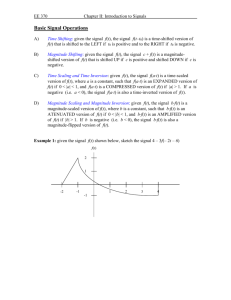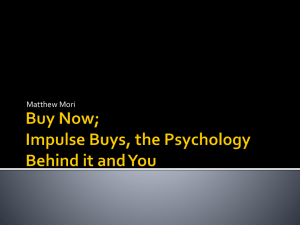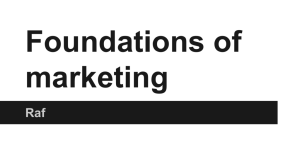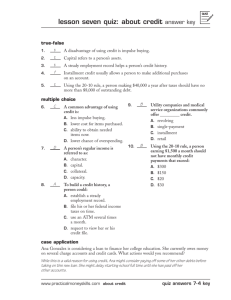CHAPTER 1 INTRODUCTION 1.1 Background Over the last four
advertisement
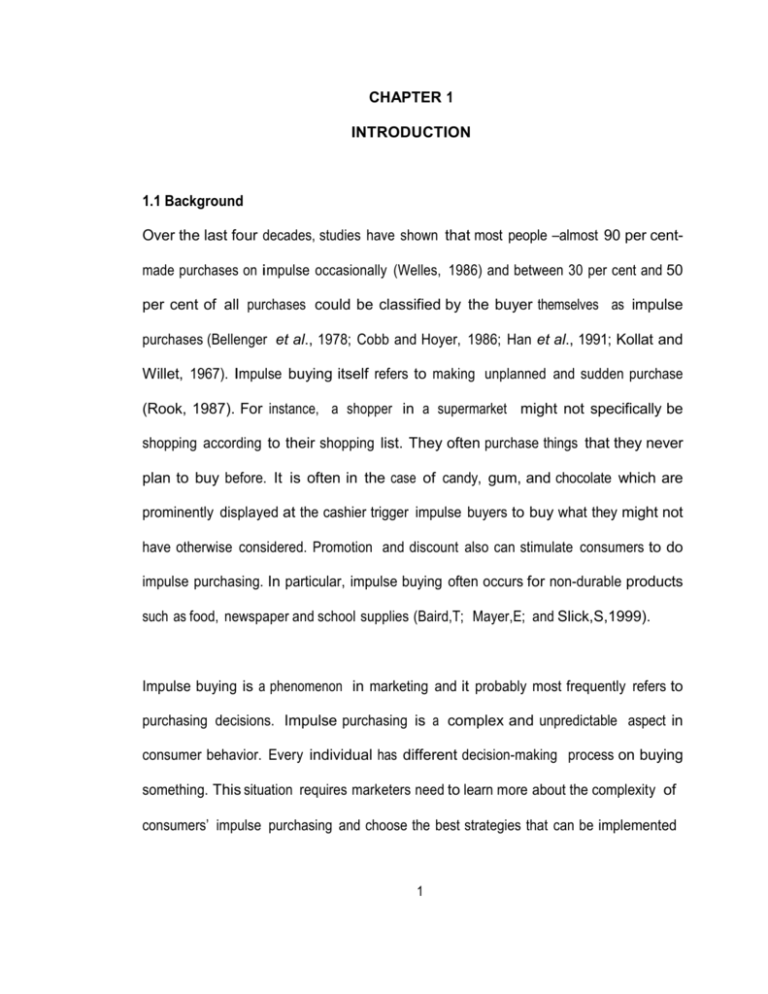
CHAPTER 1 INTRODUCTION 1.1 Background Over the last four decades, studies have shown that most people –almost 90 per centmade purchases on impulse occasionally (Welles, 1986) and between 30 per cent and 50 per cent of all purchases could be classified by the buyer themselves as impulse purchases (Bellenger et al., 1978; Cobb and Hoyer, 1986; Han et al., 1991; Kollat and Willet, 1967). Impulse buying itself refers to making unplanned and sudden purchase (Rook, 1987). For instance, a shopper in a supermarket might not specifically be shopping according to their shopping list. They often purchase things that they never plan to buy before. It is often in the case of candy, gum, and chocolate which are prominently displayed at the cashier trigger impulse buyers to buy what they might not have otherwise considered. Promotion and discount also can stimulate consumers to do impulse purchasing. In particular, impulse buying often occurs for non-durable products such as food, newspaper and school supplies (Baird,T; Mayer,E; and Slick,S,1999). Impulse buying is a phenomenon in marketing and it probably most frequently refers to purchasing decisions. Impulse purchasing is a complex and unpredictable aspect in consumer behavior. Every individual has different decision-making process on buying something. This situation requires marketers need to learn more about the complexity of consumers’ impulse purchasing and choose the best strategies that can be implemented 1 2 for retailers and stores. There are several factors that are critical in the occurrence of impulse buying. For instance, consumers’ characteristics, store environment, store display and so on. All factors above are very important in stimulating consumers to make impulse-purchasing decision. Marketers and retailers who are usually associated as supporters of the impulse buying need to realize what aspects made consumers do impulse purchasing. They need to design friendly and attractive environment that make consumers feel absolutely comfortable to shop. Taking all factors above, therefore, a thorough study about internal factors of the consumer itself is also necessary to be conducted in order to further reveal the reasons why consumers do impulse purchasing. Generally, impulse buying often occurred in supermarkets, department stores, shopping malls and many other shopping places. In Indonesia especially in Jakarta, impulsepurchasing stimulation is one of the strategies used by stores to increase profits. Since there are lots of shopping malls in Jakarta, more probabilities of consumers’ impulse purchasing also exist. In addition, consumers’ characteristics in Indonesia also support impulse buying behavior. Many studies showed that Indonesian consumers have unique characteristics. They never planned their expenditures and needs (Hermawan,H, Majalah Marketing 2007) .With this information, it can be concluded that impulse buying is very influencing in their purchasing manner. 3 1.2 Scope This thesis, entitled “A multi-method investigation of consumer motivations in impulse buying behavior” is a replication of the journal with the same title that has been conducted by Angela Hausman (2000) in United States of America. The research was adapted for consumers in Jakarta to determine the city’s consumer motivations in impulse buying behavior. This research’s participants were 200 random respondents who lived in Jakarta. The research focused on people with high shopping frequency. People who frequently shop were chosen as respondents to ensure that the research results are both of accurate and valid. 1.3 Aims and Benefits This research aimed to: 1. Find out consumers’ motivations toward impulse buying behavior. 2. Determine what factors took major role in stimulating consumers’ impulse buying behavior. 3. Provide information, suggestions and recommendations for retailers and stores in order to optimize this phenomenon of impulse buying to increase their profitability. 4 1.4 Structure This thesis is divided into 5 chapters; which consists of the followings: Chapter 1 is the introduction part explaining about the background information scope of the research, the aims and benefits of the research and the structure of the thesis. Chapter 2 discusses about the theoretical foundation of the research, and theories taken from secondary data that serve as the basic reference of the research. Chapter 3 explains about the research design and data collection method along with the hypotheses of this research. Chapter 4 discusses about the research findings and analysis. Chapter 5 presents the conclusion and recommendation of the research and business implications and recommendation on marketing strategies for further implementation by the related businesses.

